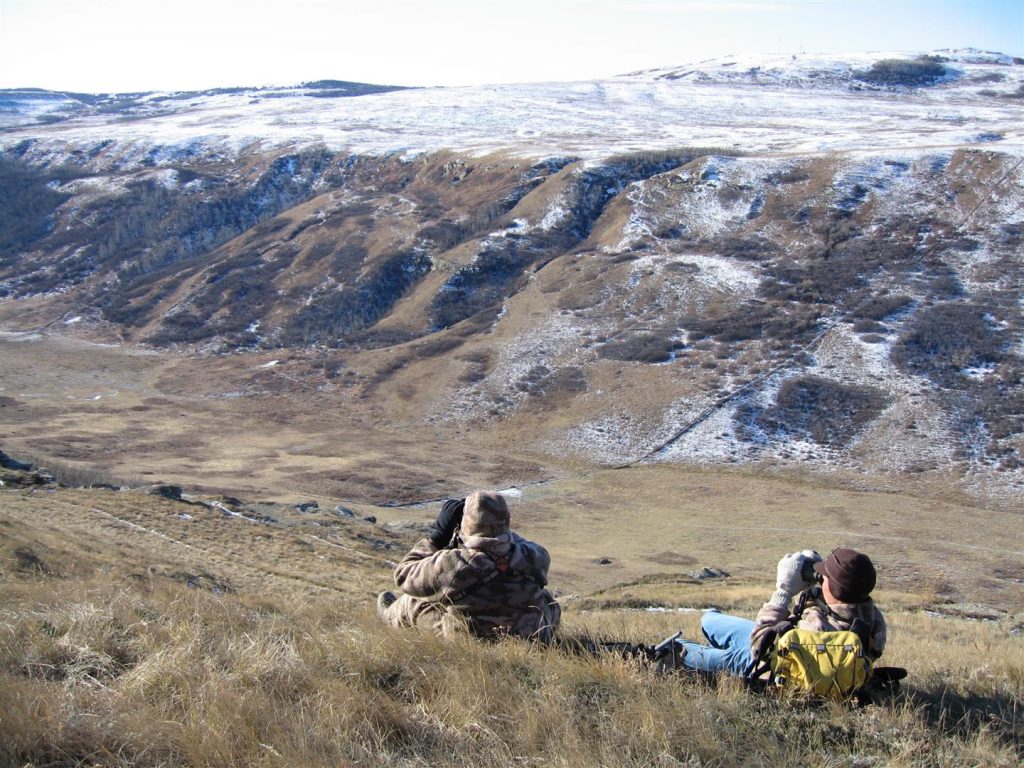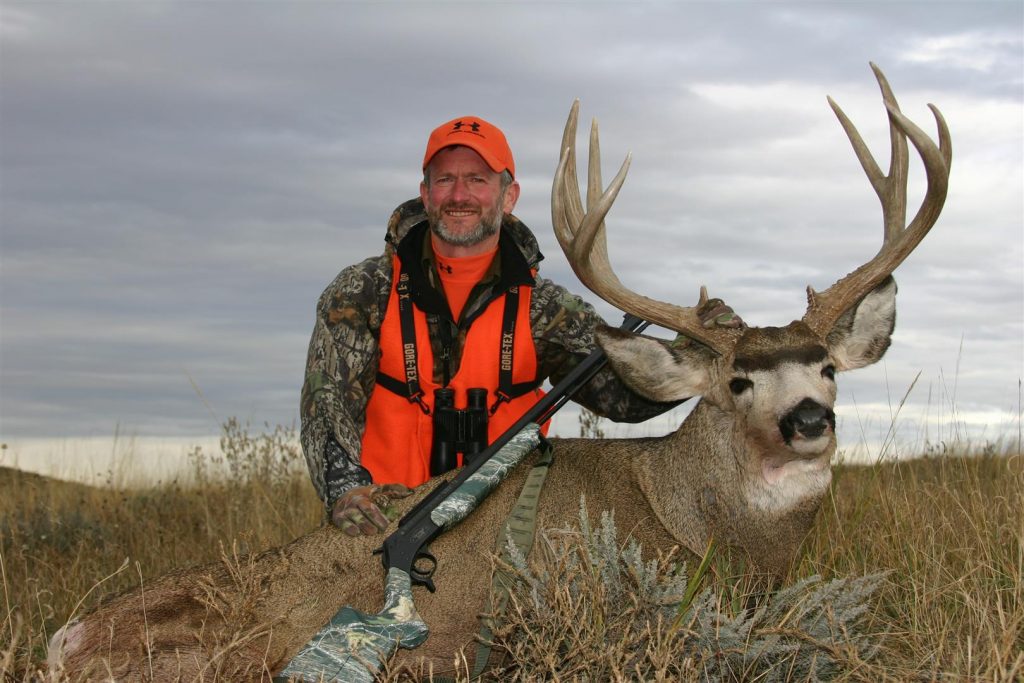
Hunting the Mule Deer Rut
While you can find a library full of information dealing with rut-hunt tactics for whitetails, there is little available on the importance of hunting the rut for mule deer or its coastal cousin, the Columbia blacktail. Is that because hunting during the breeding season is a less-effective way to locate and take mature bucks of these two species?
Not on your life. Just as it is when hunting big whitetails, the mule deer rut can be you best chance of the year to take the buck of your dreams.
Mule Deer Rut Behavior
The rutting season occurs during late fall. Depending on the latitude of the deer, this can be anywhere from early November to late December and into January. When planning a rut-hunt for mule deer or blacktail in new country, it will pay to call area biologists to determine when the rut generally occurs and when the peak of the rut is anticipated.
Like whitetails, during courtship, a mule deer buck will test a doe’s readiness for breeding by obtaining a urine sample. According to the noted biologist and author, Dr. Valerius Geist, mule deer are the only ungulates that have two methods of obtaining this urine sample. In the first, known as the familiar “low-stretch” approach, the buck approaches the female from behind in a low-stretched posture, licking his nose and uttering soft calls not unlike a fawn distress call. He may then touch the female with his muzzle. The female acts as if she is ignoring him, feeding and moving in small half-circles. The courtship continues until the female urinates, at which time the buck moves in and “lip-curls” to determine the doe’s readiness for breeding.
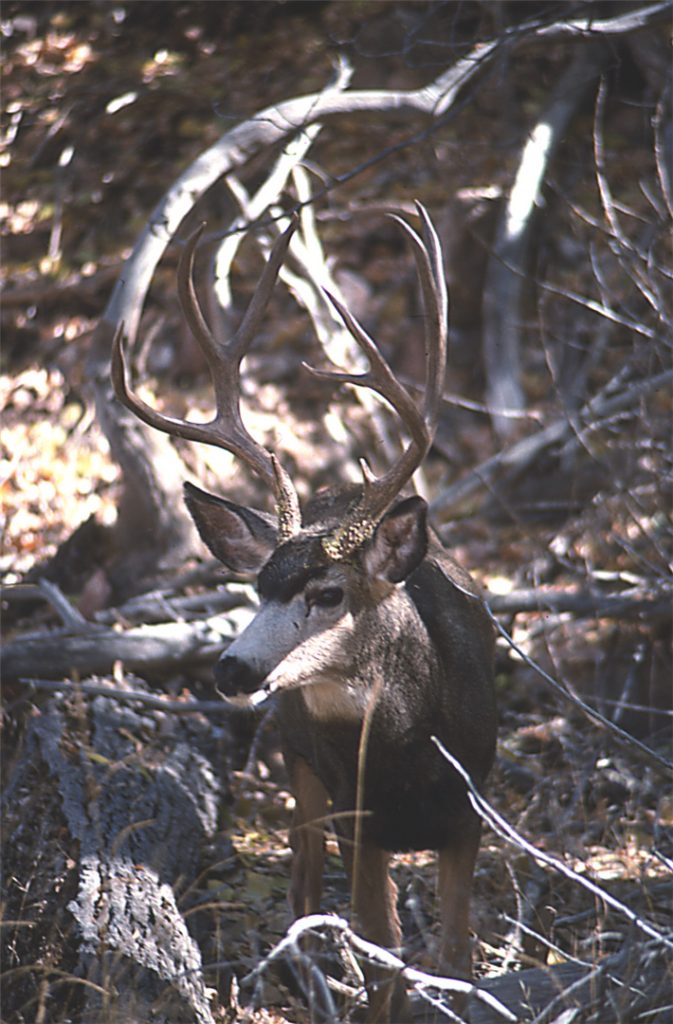
The rut is the time when you have your best chance to spot an older buck on its feet in the open during legal shooting hours.
The second method occurs when the buck becomes impatient as he waits for the doe to urinate. When this occurs, he may throw what Dr. Geist describes as a “temper tantrum.” Then, with little notice, his body becomes stiff, his upper lip begins to quiver, and a high-pitched tone resonates from deep within his throat. The buck may then throw himself, antlers lowered, at the courted female, all the while roaring. When she takes off, he follows right on her heels, slamming the ground with his front legs and bellowing with every jump. After a couple hundred yards, this chase usually ends with the buck resuming the low-stretch position and the female usually urinating.
Mule deer herds, during the rut, exhibit behavior more commonly associated with elk. The does, badgered by every testosterone-overloaded juvenile buck in the region, often stay close to the dominant buck and seek his protection from unwanted advances. The smaller bucks often circle the herd, just like young satellite elk bulls will, waiting for their chance to sneak in and satisfy their breeding urges. The difference between elk and mule deer here is that the dominant buck does not control the does like a bull elk controls a harem of cows. Instead, he is interested in one specific doe at a time, which is the one in or closest to estrus.
When a buck breeds a doe, they usually become isolated from the larger group of does for a day or two. The doe’s estrus period lasts about a day, during which time she is repeatedly bred. Naturally, smaller bucks crisscrossing the range looking for does may come upon the pair, in which case they try and split them up so that they can do some breeding, too.
The bulk of the mule deer rut lasts three to four weeks. During this time, the older breeding bucks lose much of their physical strength, often break antler points and receive tears in their coats from fighting, and frequently appear listless and dazed near the end of the cycle. When they quit breeding—they often quit cold-turkey in one day—they become isolated, looking for thick bedding cover in which they can try and recuperate enough strength to survive the winter. Post-rut behavior sees bucks disperse, rest for about three or four weeks, then emerge when it’s near time to shed their antlers and battle winter. They often join doe herds at this time, seeking the security from predators that large numbers of animals brings.
Basic Rut Hunt Tactics
During the rut, mature mule deer bucks lose much of the caution that dominates their lives during the rest of the year. Bucks that wouldn’t think of being caught out in the open and away from the dark timber or thick brush in which they live during daylight hours can now be seen moving across open sage flats and bare hillsides searching for does in estrus.
This behavior can be used to the hunter’s advantage in several ways. In open and semi-open terrain, the best technique is to climb to a high vantage point and carefully glass the surrounding countryside for deer. This is true for both mule deer and blacktails. Once a herd of does—at this time of year, they’re like a buck magnet—is located, take your time and glass both the herd and the surrounding hills for a buck. If you don’t spot a buck right away, don’t despair. He may be isolated and breeding a doe in a nearby coulee or thicket. I remember one Utah muzzleloader hunt in November in which my partner and I checked on a herd of two-dozen does every day for a week until finally, the day before we were to head home, a dandy buck appeared in their midst. Good things, as they say, often come to those who wait.
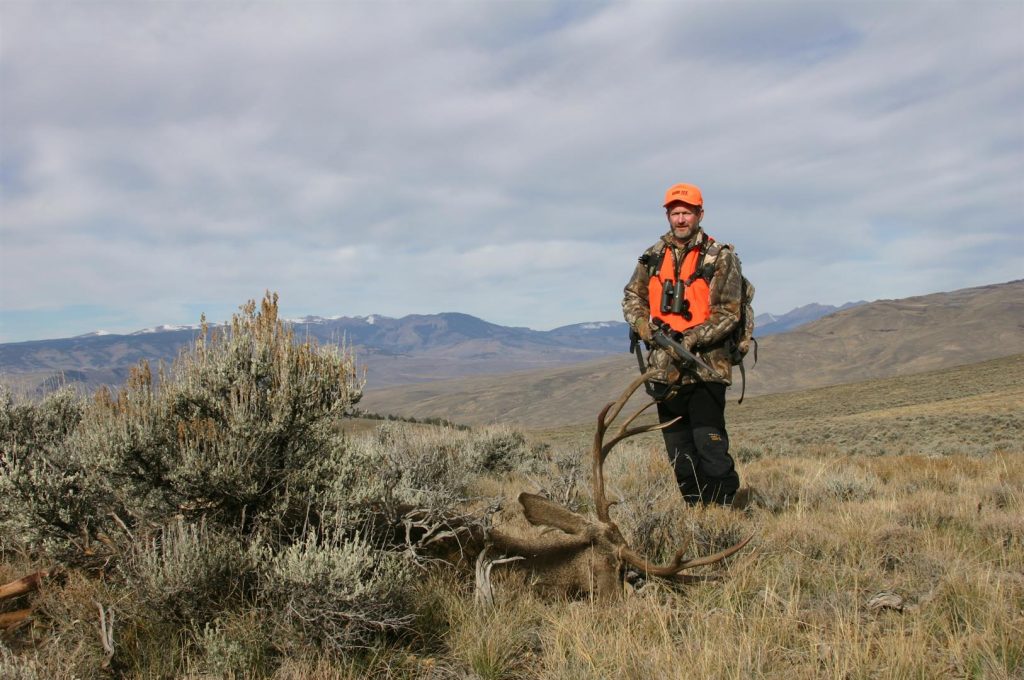
Mature bucks can sometimes be found with herds of does in semi-open sagebrush country during the rut, making them more vulnerable than at any other time of the year.
If you spot only fair-to-middlin’ bucks with the does, don’t give up. I once drew a special tag for a December hunt in California’s eastern Sierra Nevada Mountains. On the first day, my friend Jim Matthews and I spotted a herd of deer high on the mountain in which there were a pair of good bucks. I left them alone, hoping a really big buck would come along and take over. I checked on them every other day until the last day of the season, when I decided that the largest of the pair would do. I climbed the 1,500-foot slope in the dark, and when dawn broke and I could see the deer, I was rewarded instead with the larger buck I had hoped for. When I shot him that frigid morning—it was so cold and windy my camera froze and I didn’t get a single picture—I found that two of the three small cheaters he had been carrying earlier in the week had been broken off while sparring. It was a great hunt and a no-lose situation for me. If the bigger buck hadn’t come along, as often happens, I’d have been in the chips anyway. As it was, I took my largest California buck in over 20 years of annually hunting them.
It should be noted that much rut behavior occurs on or near winter range. This lower-elevation terrain can be everything from sage brush flats to cedar and juniper jungles to open hillsides to privately-owned croplands. Learning where this winter range is—and therefore where the deer are likely to be—prior to hunting is important to your success.
Remember that if the deer are on private land, obtaining permission to hunt that land is vital. If permission is not possible, you can often hunt those deer on nearby public land, when the deer sometimes go to bed in brushy draws and hillsides.
I shot a big buck with my bow one year in New Mexico out of a large herd of deer that followed a set routine every day. The deer were feeding in an alfalfa field at dawn and would linger there for a couple hours before departing the private ground and moving to adjacent juniper and brush-covered public land hills to bed for the day. I laid ambush after ambush for that buck, only to be busted by one of his 40-some companions for seven straight days. A light snow dusted the ground on the eighth day, when I found them bedded in the junipers. I was able to slowly sneak within 45 yards of the bedded deer, then grunted the buck to his feet and 20 yards closer before my arrow found its mark.
Tag Availability
Because mule deer bucks become extremely vulnerable during the rut, most, though not all, states now limit the availability of tags issued to riflemen during this time. That means you often have to accumulate bonus points in one or more states for many years before you have a realistic hope of drawing. More tags are available for those who choose to use either a bow or muzzleloader, but, again, competition for them is stiff and drawing odds often long.
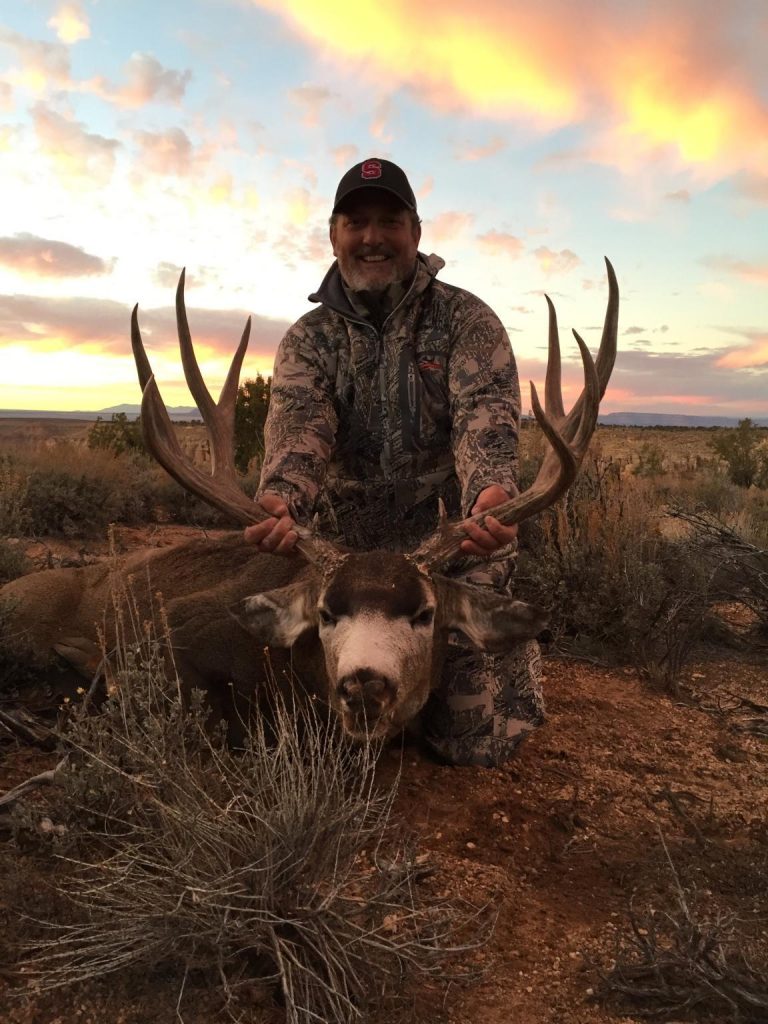
Anthony Harwell drew a coveted rut hunt tag in northern Arizona and came away with this whopper buck.
In the northern states and western Canada, the rut occurs in November, when the weather can be quite cold, and snow and ice can make traveling and hunting difficult. Further south, in southern Arizona, New Mexico and on into northern Mexico, the rut occurs in January, when the weather is brisk but you’re rarely bothered with snow squalls and freezing rain.
There’s no doubt hunting the rut is a great time to get a crack at a true trophy-class buck. To get in the game you have to study each state’s hunting regulations and hedge your bets on drawing a tag.
*-*-*-*-*-
Bob Robb is one of the most well-respected voices in outdoor media, with more than 40 years of columns and essays in print recounting his exploits in the field. A renowned archery expert, Robb has hunted on five continents and also lived 15 years in Alaska, where he held an assistant hunting guide’s license. His work has appeared in titles small and large, from American Hunter and American Rifleman to Whitetail Journal, Field & Stream, Petersen’s Hunting, Deer & Deer Hunting, and many others. He recently retired as Editorial Director from Grand View Media Group, where he oversaw the content for eight publications, including Bowhunting World, Predator Xtreme and Waterfowl & Retriever. Still, retirement is rather an ugly word to Robb, and so he continues to contribute to a variety of publications, just as he continues to hunt around the world.
